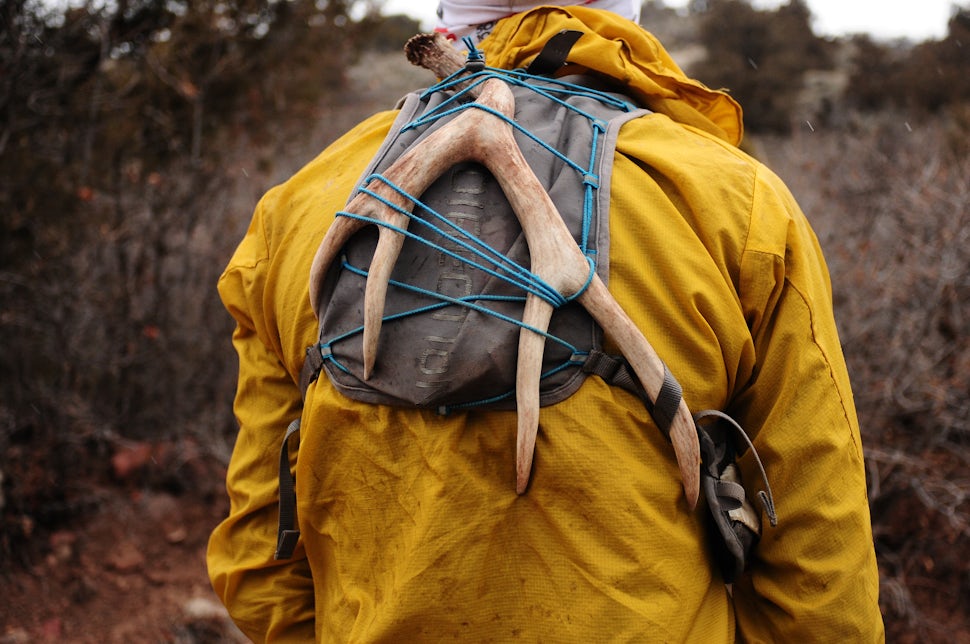Why Looking For Antlers Should Be Your Next Spring Adventure
Wherever deer, moose, and elk are found in the spring, their fallen antlers are sure to be laying close by.

I will never forget the first time I found a deer antler laying on the ground in a Kansas forest while on a hike. There was magic in seeing those polished white points sticking up from a bed of golden leaves; like a gift from the forest. I became so hooked after that experience, that I have made it a spring-time tradition to look for antlers, whether it is in the Midwest, or the mountain west where I now live.
At the end of a harsh winter, while male deer and elk rapidly lose their bodies supply of testosterone, they shed their antlers like we do our baby teeth. Immediately, the antlers then slowly start to grow back. By early fall, they are to their full size again. Anywhere crowned animals are found, you can be sure their are antlers laying around.

This activity, called "shed hunting," has become popular in certain areas over the mountain West. As the snow recedes from the hills and high country, people head out on foot to look for the dropped antlers. Not only do these antlers make great decorations, but if you are lucky and have a knack for it, you can make a decent amount of cash to fund other adventures. Antler collectors will sometimes pay up to $10 a pound, depending on quality of the antlers and the demand.
For me, I just enjoy giving the antlers to friends and family as gift. Our home is also decorated with a variety of these antlers- and they make great conversation starters.
What I love most about shed hunting, is the fact that it gives you yet another purpose to get out doors, and travel further off trail than you would otherwise go if you were not searching. Many times, I have come across other unique wildlife that has not yet been spooked since it is early in the year: in southwest Montana, I watched two wolves trailing a herd of cow elk one morning. On countless other occasions, I watched black bears feeding on the new green grass. This time of year is hands down the best season to spot bears.

Keep in mind, however, in areas with heavy snow, the animals have a difficult time surviving the harsh winter. It is best to not pressure them too much until the snow is sufficiently melted, and the risk of starvation is no longer a threat. Many states where shed hunting is popular, a specific season is designated for the practice, in an attempt to stop people from pestering the animals until the weather is more mild and they are no longer in danger of being pushed to exhaustion. Wherever you go, be sure to check your states Fish and Wildlife Department website to see if there are any regulations put in place for shed hunting. Disobeying these restrictions in these specific areas can result in heavy fines for picking up sheds. But don't let these rules discourage you from going out on your own to look for antlers.
The key to finding sheds, is to be where the animals are at that time of year. One of the more common pieces of advice I've found for looking for antlers, is to first check south facing slopes that are hit with sunlight the earliest in the year. These areas will inevitably have the most animals feeding on the new grass, since it is the first places where grass will grow. Also, keep in mind mature animals will only feel safe if there is cover for them to hide in close by. I like to look for an open, but not too steep hillside, flanked with thick forest somewhere close by. Another good spot to look for, are flat areas on a steep mountain that are found above private land. Usually, the private land is located on the valley floor where crops are grown, or the grass is tended to. At night, the animals will walk down and feed on the private land, and return to the mountain top during the day. In between their commute, you will usually find the dropped antlers. Much of the public, national forest land found out west is situated in such a manner: private land close to the road, and public land on the steeper country just above here.
There is something special about finding those unique gifts left by the passing wildlife; gifts you would otherwise rarely get to put your hands on. Right now is the perfect time of year to hit the hills and start searching.


We want to acknowledge and thank the past, present, and future generations of all Native Nations and Indigenous Peoples whose ancestral lands we travel, explore, and play on. Always practice Leave No Trace ethics on your adventures and follow local regulations. Please explore responsibly!
Do you love the outdoors?
Yep, us too. That's why we send you the best local adventures, stories, and expert advice, right to your inbox.








